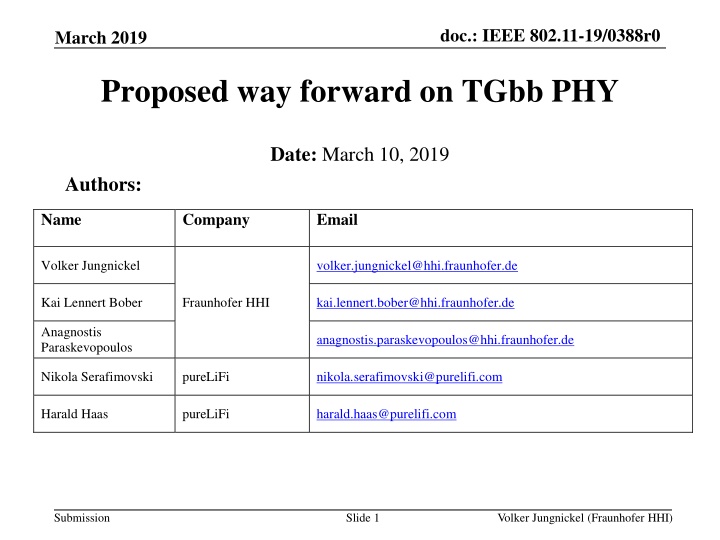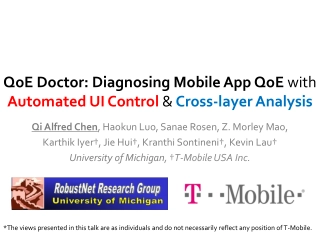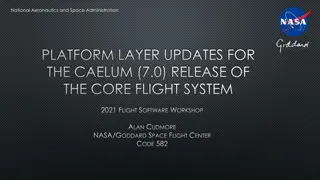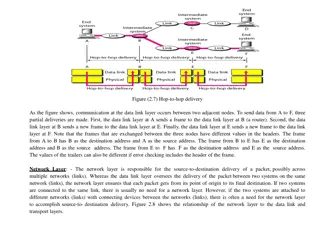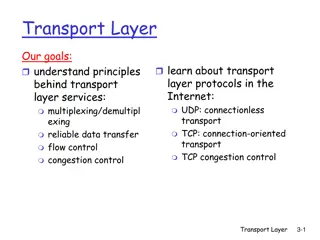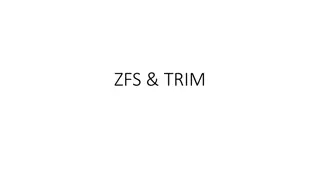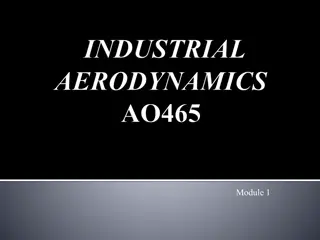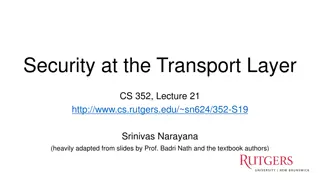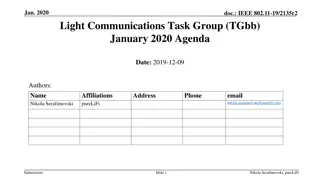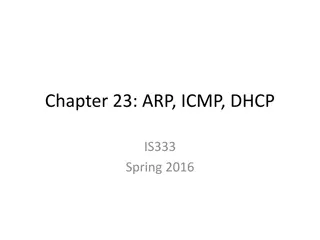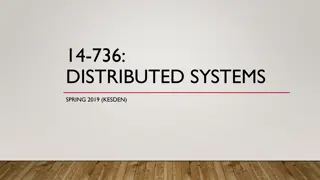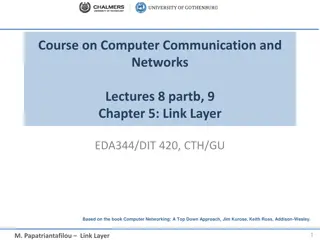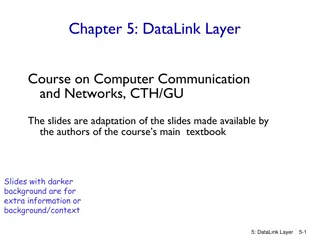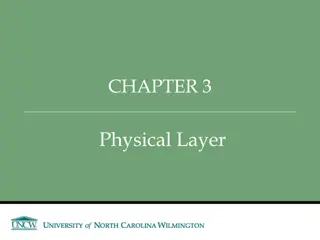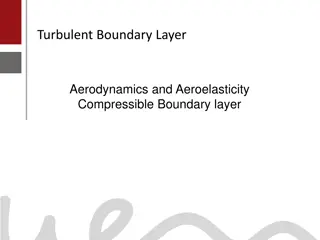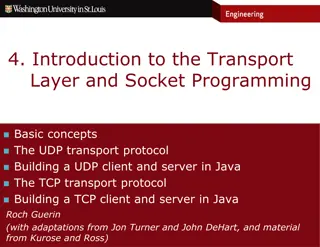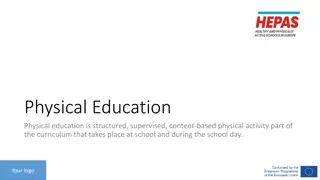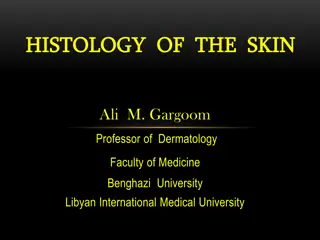Proposed Way Forward on TGbb Physical Layer Integration
This document outlines the integration of LC into the 802.11 framework, focusing on minimizing initial efforts for a working solution and optimizing throughput and robustness. It covers characteristics of LC PHYs, options for utilizing existing 802.11 PHYs for LC, and more.
Download Presentation

Please find below an Image/Link to download the presentation.
The content on the website is provided AS IS for your information and personal use only. It may not be sold, licensed, or shared on other websites without obtaining consent from the author.If you encounter any issues during the download, it is possible that the publisher has removed the file from their server.
You are allowed to download the files provided on this website for personal or commercial use, subject to the condition that they are used lawfully. All files are the property of their respective owners.
The content on the website is provided AS IS for your information and personal use only. It may not be sold, licensed, or shared on other websites without obtaining consent from the author.
E N D
Presentation Transcript
doc.: IEEE 802.11-19/0388r0 March 2019 Proposed way forward on TGbb PHY Date: March 10, 2019 Authors: Name Company Email Volker Jungnickel volker.jungnickel@hhi.fraunhofer.de Kai Lennert Bober Fraunhofer HHI kai.lennert.bober@hhi.fraunhofer.de Anagnostis Paraskevopoulos anagnostis.paraskevopoulos@hhi.fraunhofer.de Nikola Serafimovski pureLiFi nikola.serafimovski@purelifi.com Harald Haas pureLiFi harald.haas@purelifi.com Submission Slide 1 Volker Jungnickel (Fraunhofer HHI)
doc.: IEEE 802.11-19/0388r0 March 2019 Abstract This presentation aims to provide an overview on how to gradually integrate the physical layer capability for LC into 802.11. The goal is to minimize initial efforts for a working solution and allow necessary optimization for higher throughput and enhanced robustness in frequency-selective channels. Submission Slide 2 Volker Jungnickel (Fraunhofer HHI)
doc.: IEEE 802.11-19/0388r0 March 2019 Introduction TGbb has developed the whole framework for integrating LC into 802.11. For PHY, following task group documents are relevant Usage model doc. 11-18/1109r5: industrial, medical, enterprise, home Channel models and CIRs in docs. 11-18/1582r4 and 11-18/1603/r2 Frontend models in doc. 11-18/1574r5 and 11-19/0087r1 Call for proposals in doc. 11-18/2039r1 Evaluation methodology for PHY and MAC in doc. 11-19/0187r1 The exact LC waveform and wavelength to be used will be specified by future TGbb proposals. This contribution merely reflects recent discussions among TGbb members which indicate at least two promising approaches. The intention is to stimulate discussion in TGbb and 802.11 WG and obtain feedback on these approaches before proposals are formally submitted. Submission Slide 3 Volker Jungnickel (Fraunhofer HHI)
doc.: IEEE 802.11-19/0388r0 March 2019 Characteristics of LC PHYs LC requires a non-negative and real-valued baseband-signal. Bipolar signals can be turned non-negative by adding a DC- bias before transmission. optical channel + RX DSP TX DSP Driver & LED High- pass Photo- diode DC It is removed by using a high-pass filter before reception. Submission Slide 4 Volker Jungnickel (Fraunhofer HHI)
doc.: IEEE 802.11-19/0388r0 March 2019 Option 1) Use existing 802.11 PHYs for LC Complex OFDM-baseband signals are real-valued after up- conversion to the carrier frequency fc. Up-con- version Data LED Re(.) CP IFFT fc For LC, one could simply change fcto a low carrier ( low IF ), yielding a real-valued baseband signal. Submission Slide 5 Volker Jungnickel (Fraunhofer HHI)
doc.: IEEE 802.11-19/0388r0 March 2019 Using existing 802.11 PHYs for LC (2) RF frontend up-converts baseband signals onto e.g. fc=2.4 GHz. LC frontend up-converts baseband onto low IF e.g. fc=BW/2 + . is to be agreed depending on signal mask design. This way, any complex-valued baseband signal (i.e. any existing IEEE 802.11 PHY) can be used to facilitate LC. Submission Slide 6 Volker Jungnickel (Fraunhofer HHI)
doc.: IEEE 802.11-19/0388r0 March 2019 Why an optimized PHY is needed for LC? In RF NLOS channels, bit-interleaved coded modulation (BICM) works very well. BICM is the concept behind all existing 802.11 OFDM PHYs. BICM first creates redundancy and then permutes the bits in a code-word randomly over all subcarriers. In a rare fading event, lost bits can be repaired in the FEC by using the redundant bits which are likely to be correct. In LC NLOS channels, however, the concept of BICM is likely to fail. LC NLOS has a 1st order low-pass behavior [1]. Assuming a bandwidth of 100 MHz and 20 MHz cut-off frequency, 80% of the bits are lost in a fade. LC RF Submission Slide 7 Volker Jungnickel (Fraunhofer HHI)
doc.: IEEE 802.11-19/0388r0 March 2019 LC-optimized PHY needs adaptive bitloading Factory scenario in TGbb [2] using 200 MHz OFDM PHY [3]. Results are available in [4]. w/o adaptive bitloading with adaptive bitloading With bitloading, LC is more robust in NLOS channels. Submission Slide 8 Volker Jungnickel (Fraunhofer HHI)
doc.: IEEE 802.11-19/0388r0 March 2019 Option 2) Use a LC-optimized PHY The LC-optimized PHY apparently needs adaptive bitloading Adaptive bitloading is widely used in LC R&D papers Brings enhanced mobility support and optimized PHY performance Seamless operation in both, LOS and NLOS channel conditions 802.11 has discussed but never supported adaptive bitloading Adaptive bitloading brings additional complexity and overhead New control channels have to be defined Segmentation to map fixed-length code-words on variable-rate symbols Ways to bring adaptive bitloading into 802.11 a) Integrate G.hn as LC-optimized PHY under 802.11 MAC o G.hn/G.vlc is already used in many LC demos and early products may be faster b) Integrate adaptive bitloading in next-gen 802.11 RF PHY SG EHT Submission Slide 9 Volker Jungnickel (Fraunhofer HHI)
doc.: IEEE 802.11-19/0388r0 March 2019 Use existing and LC-optimized PHY under 802.11 MAC 802.11 MAC could integrate existing and optimized PHY 802.11 MAC LC-Optimized PHY Existing PHY for LC Use existing 802.11 PHY as a common, mandatory OFDM PHY (except 11ad, ay). A legacy preamble is prepended to new LC PHYs. Legacy preamble is sent by using an existing 802.11 OFDM PHY. The switch is set in the legacy signaling field. a) Legacy 802.11 PHY is used (e.g. 11a/g, n, ac, ax) reuse 802.11 PHY also for LC b) LC-optimized PHY is used (e.g. G.hn/G.vlc) optimize performance for LC Submission Slide 10 Volker Jungnickel (Fraunhofer HHI)
doc.: IEEE 802.11-19/0388r0 March 2019 References [1] V. Jungnickel, V. Pohl, S. Nonnig and C. von Helmolt, "A physical model of the wireless infrared communication channel," in IEEE Journal on Selected Areas in Communications, vol. 20, no. 3, pp. 631- 640, April 2002. https://mentor.ieee.org/802.11/dcn/18/11-18-1237-02-00bb-ieee-802- 11bb-reference-channel-models-for-vehicular-communications.pdf ITU-T recommendation G.9660-2015 P. W. Berenguer, V. Jungnickel and J. K. Fischer, "The frequency-selective rate adaptation communications," 2016 10th Communication Systems, Networks and Digital Signal Processing (CSNDSP), Prague, 2016, pp. 1-6. [2] [3] [4] benefit of for optical Symposium wireless International on Submission Slide 11 Volker Jungnickel (Fraunhofer HHI)
doc.: IEEE 802.11-19/0388r0 March 2019 Possible implementation using either legacy PHY or LC-optimized PHY a) Legacy PHY (e.g. 802.11ax) legacy preamble legacy PHY data legacy PHY preamble L-STF L-LTF L-SIG RL-SIG HE-SIGA HE-SIGB HE-STF HE-DATA b) LC-optimized PHY (e.g. G.vlc) legacy preamble LC-optimized PHY preamble LC-optimized PHY data L-STF L-LTF L-SIG LC-STF LC-LTF LC-SIG LC-ATF LC-DATA - - blue fields are the same except some content of L-SIG legay preamble is always transmitted in 20 MHz mode Submission Slide 12 Volker Jungnickel (Fraunhofer HHI)
